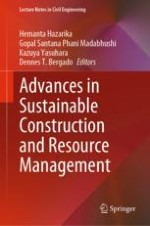2021 | OriginalPaper | Chapter
Interdependence and Rationality Between Sustainable Indicators and Criteria—A Fuzzy AHP Approach
Authors : Suchith Reddy Arukala, Rathish Kumar Pancharathi
Published in: Advances in Sustainable Construction and Resource Management
Publisher: Springer Singapore
Activate our intelligent search to find suitable subject content or patents.
Select sections of text to find matching patents with Artificial Intelligence. powered by
Select sections of text to find additional relevant content using AI-assisted search. powered by
